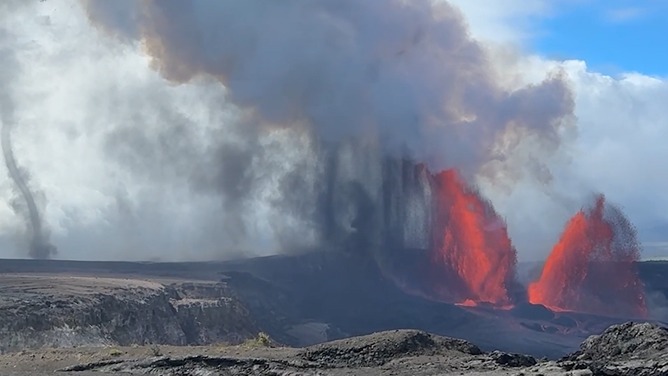
There is a sun-bleached canyon wall in southern Utah that bears a thousand voices—yet speaks in silence. This site, known today as Newspaper Rock, is not a single story but a palimpsest of messages, etched over centuries into the smooth sandstone of the Colorado Plateau. Here, in a protected alcove near Canyonlands National Park, a stone mural spans thousands of years, written not in ink, but in permanence.
The name “Newspaper Rock” is both literal and poetic. Early Anglo settlers saw the dense layering of figures and symbols and likened it to a bulletin board or printed page. But long before such comparisons, Indigenous peoples of the Southwest—Ancestral Puebloans, Fremont, Ute, Navajo—came here to carve memory into stone. Some of the earliest glyphs are estimated to be over 2,000 years old, while others date only a few centuries back. The result is a living archive where time folds into itself.
One cannot stand before the rock and not feel a hush. Its surface is coated in desert varnish, a dark sheen created by windblown clay and manganese deposits. This acts like nature’s canvas, and the ancient artists removed this thin layer with sharp tools to reveal the pale rock beneath. What emerges is a symphony of signs: spirals and serpents, deer and bighorn sheep, human forms with outstretched arms, hands, feet, and enigmatic wheels or suns. Some images seem familiar—perhaps a hunting scene or a path. Others are abstract, unknowable, like the glyphs of a lost alphabet.
What makes Newspaper Rock so unique isn’t just the density of its markings, but their chronological layering. Unlike petroglyph panels that represent a single event or culture, this site captures generations of voices. It’s likely that returning travelers, hunters, or visionaries stopped to leave a mark, adding to a collective narrative rather than erasing or overwriting it. This suggests not just art, but ritual, communication, even cosmic dialogue.
Archaeologists still debate the meanings behind the figures. Some believe the site functioned as a territorial marker—a message board between clans or migrating groups. Others see it as a shamanic site, where visions, dreams, and celestial patterns were recorded. The frequent depictions of horned anthropomorphic figures could represent gods or ritual leaders, while the spirals may chart solar movements or the cycles of life. What’s undeniable is that each symbol was made with intent, and none were casual doodles.
Interestingly, the site has been known to the Navajo as “Tse’ Hane”, meaning “rock that tells a story.” Their interpretation often imbues the symbols with spiritual weight—warnings, protection, or sacred memory. While European interpretations often seek data or events, Native perspectives remind us that these markings may exist beyond literal meaning—as spiritual resonances more than mere history.
Newspaper Rock thus becomes a space where two great human impulses meet: to remember, and to be remembered. In a pre-literate society, carving into stone wasn’t just a record—it was a sacred act of preservation. These people weren’t just pᴀssing by; they were making themselves part of the landscape. The rock doesn’t just depict their world—it becomes it.
And yet, it also challenges us. We live in a digital age of fleeting images and instant communication. By contrast, these carvings are slow, deliberate, enduring. A symbol pecked 1,500 years ago still holds its shape, while today’s pH๏τos vanish in a swipe. What does it say about us that our ancestors used eternity to say things we no longer understand?
Despite modern research, many of the glyphs resist translation. And perhaps that’s part of their power. They weren’t meant for everyone—only for those who knew the stories, the signs, the songs behind the marks. In that way, Newspaper Rock is not just ancient art—it is a sealed archive, waiting not to be decoded, but respected.
Today, the site is protected, fenced off from touch but not from sight. Visitors come in silence, some with reverence, others with curiosity. Tourists try to pH๏τograph the wall, but it’s nearly impossible to capture its spirit. The stone is best experienced in person—in that hush, in that heat, with wind swirling dust around your feet.
Standing before it, one realizes that this is not a relic. It is a living memory. The figures may be static, but the meanings are still breathing, still echoing across the red rocks. They are the fingerprints of a people who understood time differently—not as a river that pᴀsses, but as a circle that remains.
And so, we are left with the same questions those carvers perhaps once asked themselves: What will I leave behind? Will it matter? Will it last?
In the end, Newspaper Rock does not offer answers—it offers perspective. It tells us that humans have always yearned to communicate something beyond the immediate. It reminds us that permanence has a language, and that sometimes, the best stories are the ones we cannot fully read—but feel, etched into the bones of the Earth.
This wall, this stone, this silent song—it still speaks. Will we learn to listen?
<ʙuттon class="text-token-text-secondary hover:bg-token-bg-secondary rounded-lg" aria-label="Chia sẻ" aria-selected="false" data-state="closed">


